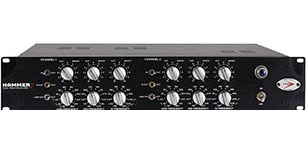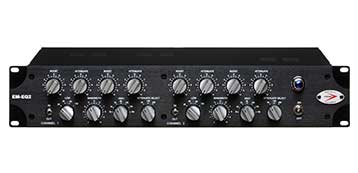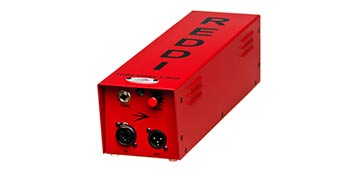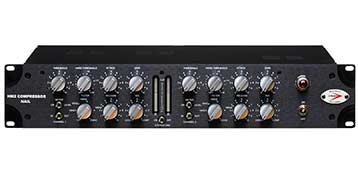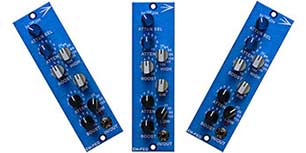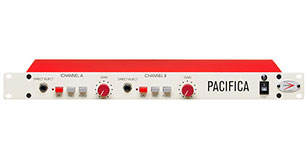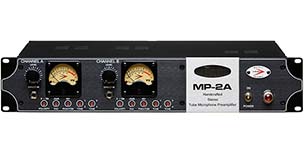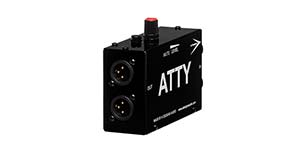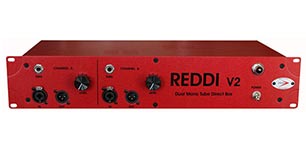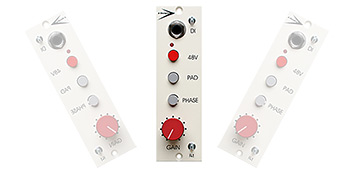The Amazing Flexibility of the Reddi D.I.
The REDDI V2: Your Secret Weapon for Bass, Guitars, Synths & More

Artists Who Use the REDDI
- Stanley Clarke (Jazz Fusion Legend)
- Reggie Hamilton (Stevie Wonder, Whitney Houston)
- Carlitos del Puerto (Chick Corea, Beyoncé)
- Lee Sklar (Phil Collins, James Taylor)
- Rick Minor (Prince, Janet Jackson)
- Paul Jackson Jr. (Michael Jackson, Quincy Jones)
- Eric Jackson (Jay-Z, Mary J. Blige)
- Jimmy Johnson (Weather Report, Allan Holdsworth)
- Chris Wolstenholme (Muse)
- Pino Palladino (The Who, D'Angelo)
- Tony Levin (Peter Gabriel, King Crimson)
Born from the legendary front-end of the Ampeg B-15 amplifier—the tube-driven tone that powered classic Motown and rock recordings—the A-Designs REDDI V2 is far more than just a DI box. This dual-mono tube powerhouse delivers warmth, clarity, and unmatched flexibility for bassists, guitarists, synth players, and engineers. Let’s go over why it’s become a studio and stage staple.
Specs at a Glance
- Frequency Response: 20Hz–60kHz (±0.5dB)
- Tubes: (2) 6N1P (dual-mono design)
- Inputs: 2x ¼" TS (instrument) | Outputs: 2x XLR (balanced), 2x Thru (¼" TS)
- THD: <0.1% @ 1kHz | S/N Ratio: >100dB
Why Bassists Swear By the REDDI V2
The REDDI V2 solves a critical problem for bass players: signal splitting without tone loss. Here’s how pros use it:
1. Dual-Amp Setup (Live or Studio)
Send one channel to a clean amp (e.g., Ampeg SVT) and the other to a gritty tube amp (e.g., Orange AD200). Blend both for a massive tone.
2. FOH + Stage Amp Split
Channel 1’s XLR output feeds the front-of-house mixer (pure tube tone), while the Thru sends to your stage amp. No more weak DI signals!
3. Stereo Effects Blending
For studio magic, chain the channels: Bass → Channel 1 Input → Channel 1 XLR Out (clean to FOH) → Channel 1 Thru → Channel 2 Input (with effects) → Channel 2 XLR Out (effected to FOH). This creates a wide stereo image—perfect for rock ballads or synth-bass tracks.
Beyond Bass: Unexpected Uses for the REDDI V2
1. Warming Up Synths & Keyboards
With a 20Hz–60kHz range, the REDDI V2 adds tube harmonics to sterile digital synths.
2. Upright Bass Brilliance
The high impedance input preserves the natural resonance of upright basses. Jazz players love its ability to handle piezo pickups without harshness.
3. Electric & Acoustic Guitars
While most DIs suck tone from guitars, the REDDI’s 6N1P tubes add richness. Try it:
- Acoustic: XLR to FOH, Thru to stage amp
- Electric: Run parallel with your pedalboard for a clean/dirty blend
4. Vocal Texture (Yes, Really!)
Engineers at Sunset Sound have used the REDDI as a vocal tube preamp for lo-fi grit. Mic → Preamp → REDDI → DAW.
Pro Tips for Getting the Most from Your REDDI V2
Gain Staging Secrets
Set input levels so the tube just kisses the signal (LED flickering at peaks). Too hot, and you’ll lose clarity.
Cable Matters
Use high-quality TS cables for inputs and balanced XLRs for outputs to prevent noise.
Pairing Ideas
- With a SansAmp: Blend the REDDI’s warmth with SansAmp’s bite
- Into a LA-2A: Tube DI → Tube compressor = vintage heaven
Why the REDDI V2 Belongs in Your Rack
Whether you’re a bassist needing split-signal flexibility, a producer craving tube warmth on synths, or an engineer tired of lifeless DI tones, the REDDI V2 delivers.
Ready to transform your tone?
→ REDDI V2 (Full specs & videos)
→ REDDI for a more portable one-channel REDDI

